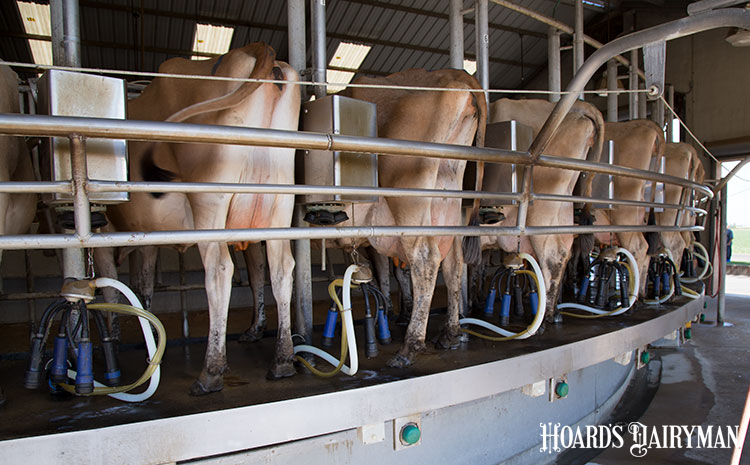
Annual U.S. dairy cow inventory has been in continual expansion mode every year since 2010 . . . except for the drought year of 2013. Stronger demand for U.S. dairy products in domestic and international markets has often been cited as the major driver for the growth in dairy cow inventory.
However, slower growth in U.S. milk yields may have also been contributing to expanding dairy cow numbers over the past few years. The annual growth of U.S. milk yields from the 2000 to 2010 period averaged 1.6 percent, while the 2011 to 2017 segment slowed to a 1.2 percent annual growth rate.
There are two factors that appear to be driving the slowdown in U.S. milk yields.
1. The combined milk yield for states containing or located west of the Continental Divide (Arizona, California, Colorado, Idaho, Montana, Nevada, New Mexico, Oregon, Utah, Washington, and Wyoming) has been essentially flat over the 2011 to 2017 period near 23,500 pounds. This follows a period in which production per cow grew by an average of 1.4 percent per year in these states from 1999 to 2010. With nearly 40 percent of total U.S. dairy cow inventory located in this part of the country, this halt in milk yield growth is important. Higher feed costs have likely been partially responsible for the slowdown but perhaps other factors have also been in play.
2. As much of the recent expansion of dairy cows has been occurring in states east of the Continental Divide, it has also had the effect of slowing U.S. milk yield growth. The states east of the great divide had an average 2016 milk yield of 22,274 pounds, which is 1,314 pounds less than the states west of the Rocky Mountains.
There are often multiple factors affecting industry supply response. In the case of dairy, it is important to realize that it is more than just strong demand for dairy products that has driven the growth in U.S. dairy cow inventory. If the slowdown in U.S. milk yield continues, it may provide an opportunity for further expansion in U.S. dairy cow inventory without oversupplying milk markets.








